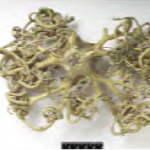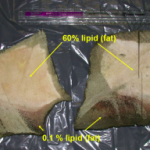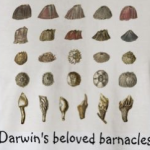
Benthobatis marcida (Chordata: Elasmobranchii: Torpediniformes: Narcinidae)
“It is a clumsy fish about a yard long, and very ugly. Being too slow to catch its swift prey in fair chase, it stuns them with an electric shock, and then eats them. The electric power comes from the body of the Ray; if it wishes it can send a deadly shock through any fish which ventures near. Without chance of escape, it is at once stunned, and falls helpless.” – R. Cadwallader Smith Within the Deep
Description Described in 1909 in collections from the Albatross Steamer off of the coast of the southern U.S., Benthobatis marcida come from Narcinids (narke is Greek for sleep, numbness ) and is commonly referred to as the blind torpedo. It has light brown, soft skin that is almost flabby and is where it gets its name marcida from – meaning “lacking substance” (1). It’s caudal fin length is half the length of its tail and it possesses a narrow retractile mouth (1). It has been reported at up to 44cm in total length (2).
Physiology Eyes are functionless and covered with skin (1). Benthobatis are “numbfishes” meaning that they produce a much weaker electric current than their cousins the torpedo rays. Electrogenesis is mainly for defense and it is appears unlikely that they use such a weak current for prey capture (3).
Nutrition Most “numbfishes” eat invertebrates, particularly polychaetes (3).
Reproduction Females have spongy ovaries about 2cm in diameter, eggs measure about 2mm in diameter (2). There is so far no evidence of egg capsules (2), such as are commonly produced in rays and skates.
Ecology Benthobatis marcida is solitary and lives on sandy bottoms in neritic water (4). Nothing else is known about their ecology.
Biogeography B. marcida is distributed in the western central Atlantic Ocean from South Carolina to northern Cuba, potentially found in the Atlantic side of Nicaragua (4). It has been collected between 212-923 meters depth.
Further Reading:
1. Bean, B. A., and A. C. Weed. 1909. Descriptions of two new species of electric rays, of the family narcobatidae, from deep water off the southern Atlantic coast of the United States. Proceedings of the United States National Museum 36:677-680.
2. Daiber, F. C. 1959. An observation on the deep-sea electric ray. Copeia 1:74.
3. Dean, M. N., T. E. Nietfeld, and D. S. Conklin. 2005. Husbandry notes on the lesser electric ray. North American Journal of Aquaculture 67:58-65.
4. Froese, R., and D. Pauly. 2007. FishBase. World Wide Web Electronic Publication. www.fishbase.org, version (02/2007) accessed 05/2007.





